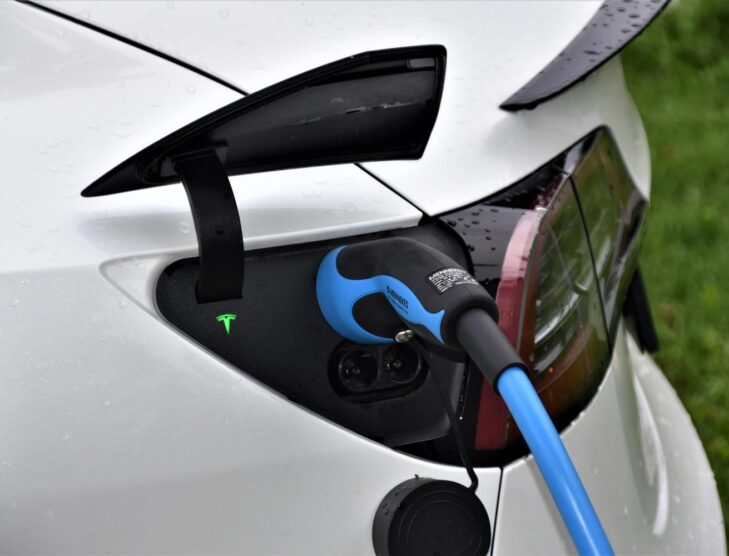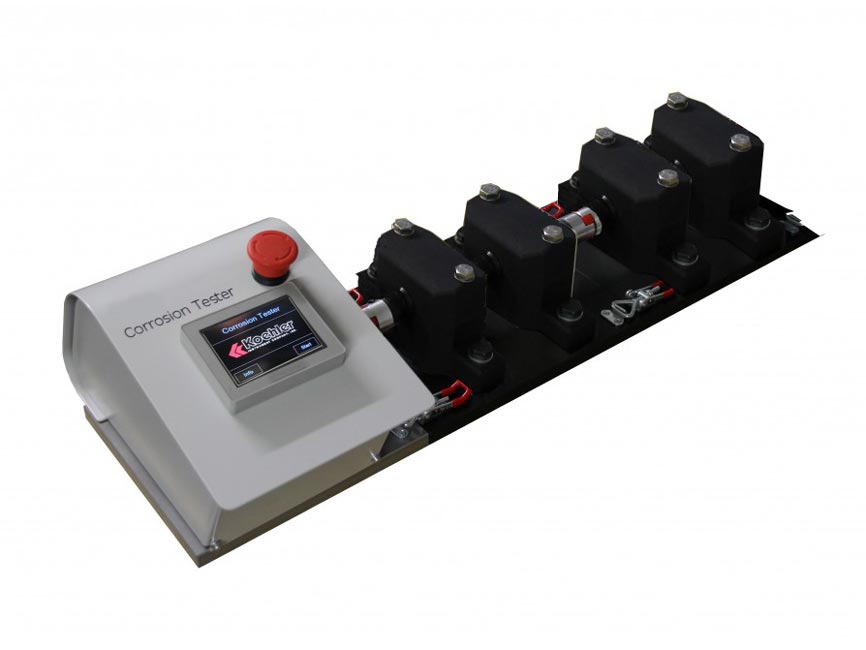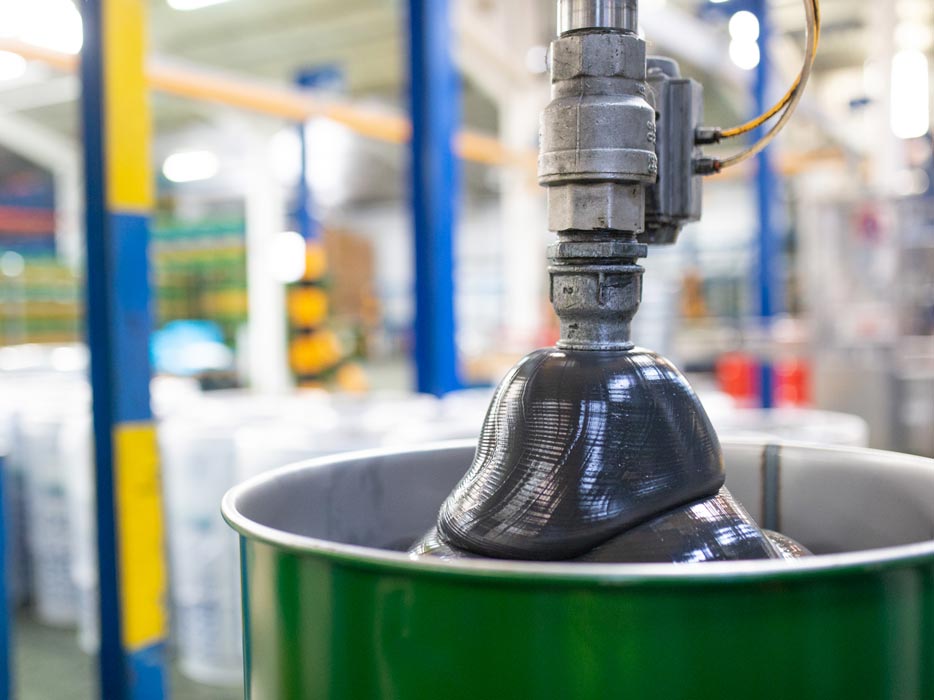
Electric vehicles: Special requirements and impact on future grease demand
Dr. Raj Shah, Alexandra Przyborowski and Nathan Aragon
From the first crude electric vehicle developed in 1832 by Robert Anderson to the introduction of the Toyota Prius, the world’s first mass-produced hybrid vehicle, in 1997, electric vehicles are entering the mainstream market worldwide with great potential.[1] Studies forecast that electric vehicles will reach 10% of global passenger vehicle sales by 2025, rising to 28% in 2030 and 58% in 2040.[2] As the automobile industry is showing demand in the electrification of transport, a new set of lubricants and greases must be made specifically to tailor to the performance requirements of electrical and gear components that are unique to electric motors. Characteristics of lubricants used in electric vehicles have a common goal: to minimize friction loss, enhance durability, improve energy efficiency, and strengthen other performance aspects. With the presence of electric currents and magnetic fields, new challenges arise for the lubrication of electric motors in electric vehicle environments.

and a current is passed through in series.
The use of lubricating oils in vehicles is vital to their operation to ensure the engine components move smoothly for increased engine performance. Conventional vehicles use an internal combustion engine (ICE) fueled by gasoline or diesel fuel that needs to be properly lubricated to reduce friction between surfaces so that the vehicle can run smoothly and efficiently. When conventional engines are properly lubricated, it puts less work into moving pistons as the pistons glide easily, which means the vehicle can operate while using less fuel and run at a lower temperature.[3] Lubricants used in motor vehicles fall into two basic categories: mineral and synthetic, both of which do not biodegrade easily and are not from renewable resources.[4] Scrutinization by non-governmental organizations and environmental agencies has led to global interest in the importance of CO2 emission reduction where new markets are progressing towards green, eco-friendly technology like electric vehicles (EVs). The types of lubricants needed in conventional vehicles differ from those for an electric vehicle in how ICEs need oil to minimize engine friction and transmission fluid to keep the engine cool and lubricated. EVs require oil for the gears which translate as the EV’s transmission, as well as a fluid specifically for the electric motor to improve cooling.[5] Lubricants in electric vehicles have to be reformulated to work in close contact with electric modules, new polymers, sensors, and circuits.[6]
The properties of greases used in electric vehicles fall under several categories: electric properties, thermal properties, and copper corrosion.[7] Electric properties in EVs, meaning electric conductivity and breakdown voltage, help endure the current flow through the lubricated bearings while protecting the contacting surfaces.[8] Electric motors are subjected to the build-up of static electricity and discharge/arc across the bearing that can damage the rolling elements, thus accelerating wear. The lubricant properties required to protect the electric motor from electrically induced bearing wear are proper electric resistance and lubricant dielectric strength throughout the lubricant lifetime. Also low electric resistance is important in avoiding electric damages. Much more research is needed on which specific types of lubricants will interact positively with electric components while meeting other requirements, such as thermal management and material compatibility. So far, ionic liquids are able to both reduce wear and conductivity, but these need further development to bring down costs. Additionally, phospholipids and stearic acid have been used as additives to effectively lower conductivity.[9]
![Figure 2: The set-up of an electrically conductive grease-bearing electric resistance test.[10] The purpose of this test is to demonstrate the difference in conductivity through the bearing.](https://www.fuelsandlubes.com/wp-content/uploads/2021/05/electrically-conductive-grease-bearing-electric-resistance-test-.jpg)
resistance test.[10] The purpose of this test is to demonstrate the
difference in conductivity through the bearing.
A test method used to measure whether or not electric discharge damage would occur is the electrically conductive grease-bearing electric resistance test.[10] A pair of bearings are mounted on a shaft and a current is passed through both in series. By measuring the current through the bearings and the voltage across the bearings, their resistance can be determined. This test is to demonstrate the difference in conductivity through the bearing, comparing non-conductive and conductive greases. The bearing is filled to around 30% with grease, where then at rest the bearing balls are in contact with the raceways, so the measured resistance is very low. However, when rotating, a thin film of grease separates the balls from the raceways. A non-conductive grease will increase the voltage across until it breaks down, causing damage, but a conductive grease prevents this from happening by providing a path for current to flow when the bearing is rotating.[10]
Thermal properties such as thermal conductivity and specific heat are another main property of greases in electric vehicles. The main component of a lubricant is the base oil. Base oil is manufactured from crude oil or chemically derived from synthetic material. The molecular structure determines the thermal capacity and thermal conductivity of the finished lubricant. Lubricants in electric vehicles are exposed to high voltages that subject them to high temperatures. Batteries and e-motors generate a large amount of heat but need a cool environment to function properly, demanding thermal management through the use of lubricants.

The cooling performance of any liquid is based on its capacity to source heat and the relationship between temperature and viscosity. Specific heat is also a key consideration for the selection of any cooling fluid.[11] Water has the highest specific heat than any other common substance, however, it cannot be used alone on a motor/battery; therefore it is usually mixed with glycol to prevent it from freezing or boiling. This mixture was found to be better than petroleum-based oil, which is used in conventional vehicles, at retaining heat.[9] Making sure lubricants used in electric vehicles have a high specific heat will help insulate the electric motor and maintain a constant temperature. The lubricant will efficiently generate heat and require more energy to increase the temperature, which is what is being avoided. So far, “nanofluids,” which are lubricants with nanoparticle additives, have shown promise for thermal cooling in EVs. Specifically, metal-oxide nanoparticles that are mixed with the base fluid and other nanoparticles such as silica and carbon nanotubes have improved resistance to wear while providing the desired thermal management properties.[12]

The standard test method for the life of lubricating greases in ball bearings at elevated temperatures (ASTM D3336-20b) evaluates the ability of a grease to properly lubricate in a ball bearing while under light loads at high speeds and elevated temperatures for an extended period.[13] A grease-lubricated SAE No. 204 ball bearing is rotated at 10,000 revolutions per minute (RPM) under light load at a specified elevated temperature. The test is continuously done until failure occurs or a specified number of hours of the running time is reached. This allows researchers to test whether or not certain greases will efficiently lubricate the system under high-temperature conditions that can occur in electric vehicles.
The components in the electric motor, such as coils, need to be protected from copper corrosion for the safety of the vehicle’s lifetime. Lubricating greases can serve as corrosion-resistant material by preventing contaminants from entering the contact surface. The standard test methods for the determination of corrosion-pre-ventative properties of lubricating greases under dynamic wet conditions (ASTM D6138) assesses a greases’ ability to prevent corrosion and rust when exposed to water.[14] New, clean, and lubricated bearings are tested partially immersed in water, distilled, synthetic seawater, or sodium chloride solution, under no applied load at a speed of 83 RPM. Corrosion leads to the eventual decay of bearings through surface material being covered to oxides which compromises the longevity of the bearing. The need for high-quality grease should protect the bearing in an electric vehicle when subjected to humid and wet conditions.[15]

It is difficult to predict exactly what will happen with the future market for electric vehicle greases. On one hand, EVs will use more grease than an ICE vehicle due to the lubrication of more components; at the same time, manufacturers have preferred bearings which are filled-for-life.[17] There has also been a shift away from using lithium greases because of the increased demand for lithium-ion batteries, due to their high energy density. By 2030, it is expected that the number of light vehicles will rise to about 1.6 billion, with an estimated 18% of that being taken up by electric vehicles.[6] With increased production of EVs, the demand for lithi-um hydroxide will continue to increase as well. Although the demand will significantly increase by 2030, this demand will still use less than 1% of lithium reserves worldwide. Therefore, it is clear that lithium reserves are not the problem but pressure will be placed on lithium manufacturers over how quickly and efficiently they can carry out this process. Current production practices for lithium hydroxide are not efficient. This is one of the reasons why the cost of producing lithium grease has increased by 13% in just one year. There is additional concern that the production of lithium will not be able to keep up with demand, especially with demand rising due to demand for EV batteries.[18]
As of now, almost one-third of lubricant demand comes from light vehicles, consisting mostly of engine oils, which raises questions on how that will change with EVs steadily gaining market share. To date, the world consumes about 39 million metric tons of lubricants per year, with an estimated value of roughly USD146 billion.[17] Lubricant manufacturers need to take into consideration how the market may completely flip, taking into account proposed legislation, public opinion, and consumer needs. For the past two decades, lubricant formulators have been focusing on improving fuel efficiency within internal combustion engines, but still requiring about 40 different types of lubricating products for the vehicle to operate. On the other hand, electric vehicles may require fewer types of fluids, but the new challenge of finding a way to efficiently lubricate an e-motor while simultaneously safeguarding the power electronics in the system needs to be studied carefully.
REFERENCES
[1] “Timeline: History of the Electric Car.” U.S. Department of Energy
[2] Cohen, Ariel. “Plugging into the Future: The Electric Vehicle Market Outlook.” Forbes Magazine,
[3] “Drive Clean Rebate for Electric Cars.” NYSERDA
[4] “J.M.K.C. Donev et al. Energy Education – Lubricating oil [Online], 3 September 2018
[5] “Lubricating Electric Vehicles.” CNBC,
[6] “Impact of Electric Vehicles on Lubricants Demand.” McKinsey Energy Insights
[7] Chen, Yan, et al. “Performance Characteristics of Lubricants in Electric and Hybrid Vehicles: A Review of Current and Future Needs.” Frontiers, 2 September 2020
[8] “Lubrication Challenges of Hybrid and Electric Vehicles.” F+L Magazine, October 3, 2018
[9] “The New Age of Lubricants for Electric Vehicles.” Electric & Hybrid Vehicle Technology International, 7 August 2020
[10] “Electrically Conductive Grease-Bearing Electrical Resistance Test.” Newgate Simms Limited, Newgate Simms Tech Support, 27 May 2019
[11] “EV Thermal Management or Cooling EVs.” Lubes’N’Greases
[12] Tung, S.C., et al. “Global Insights on Future Trends of Hybrid/EV Driveline Lubrication and Thermal Management.” Frontiers in Mechanical Engineering, 20 October 2020
[13] ASTM D3336-20b, Standard Test Method for Life of Lubricating Greases in Ball Bearings at Elevated Temperatures, ASTM International, 2020
[14] ASTM D6138-19, Standard Test Method for Determination of Corrosion-Preventive Properties of Lubricating Greases Under Dynamic Wet Conditions (EmcorTest), ASTM International, 2019
[15] “Standards and the Growth of Electric Vehicles.” ASTM Standardization News, 9 September 2020
[16] “Corrosion Tester.” Koehler Instrument Company Inc.
[17] Johns, Simon. “The Electrifying Future of Electric Vehicles.” Lubes’N’Greases, 8 May 2020
[18] Shah, R. and Braff, S. “Lithium Ion Battery Demands and a Discussion of Lithium Supply Crisis: How Worried Should We Be?” NLGI Spokesman, vol. 85, no. 5, November/December 2018, pp. 26-35.







